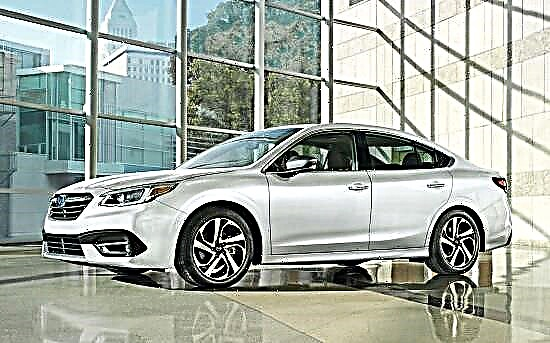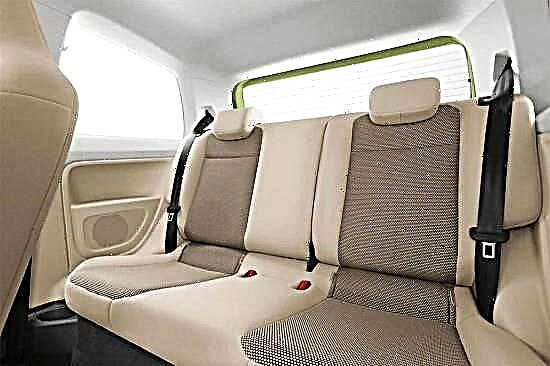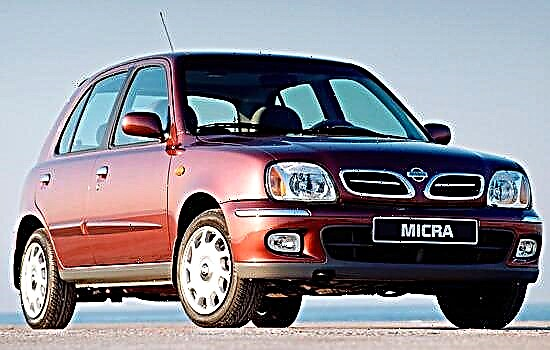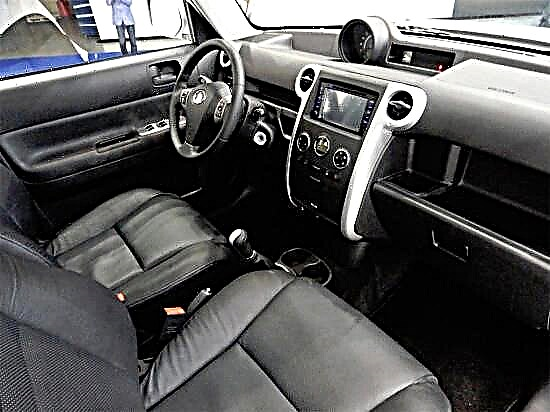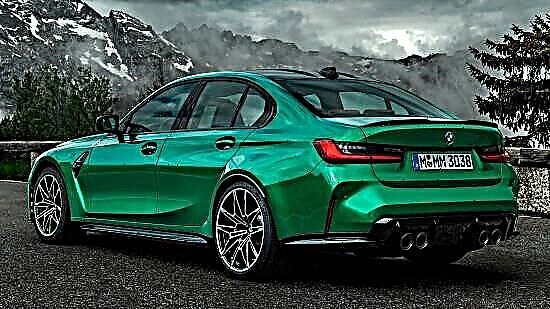Ratings of cars and auto products
Reviews, comparisons & tips for motorists
There is a time and place when even the best summer tire will not help improve the performance and safety of your vehicle. Summer tires are designed to provide grip on warm surfaces.
They provide significantly more traction than all-season or winter tires in warm, supportive driving conditions.
Types of summer tires for cars
How to choose summer tires? It is a common myth that summer tires are worse in the rain than all season or winter tires. It is not true. In fact, summer tires often pump more water through the treads, helping in wetter weather than all-season or winter tires. However, cars that drive in cold or snowy conditions will not go well with summer tires. Likewise, if you are only planning to use the car on the track, it may be worth thinking about tires and slicks from a racing lineup that suit your needs.
So why choose a set of summer tires over all-season or winter tires? While budget and ride comfort are some trade-offs when buying tires, performance and safety are usually top priorities. Road tires are definitely one of the best upgrades you can make to your car. The right set of summer sports tires will dramatically improve the acceleration, braking and handling of your vehicle in warm weather. The same cannot be said about all-season and winter tires.
The best summer tires are products that provide consistent performance in a wide variety of conditions. Therefore, we do not recommend using tires that are only good in one particular environment. When it comes to summer products, you need a rubber that's suitable for both dry and wet roads.
Let's take a look at what types of protectors work best in terms of grip. It is worth noting, of course, that this is not the only factor or parameter that matters. Many areas are important to drivers, such as rolling resistance and wear resistance. However, traction is still important for various aspects of driving, from cornering to ensuring effective braking distances.
You can buy all tires in the online store or Yandex.
Dry conditions
Looking for good grip on dry summer roads? Here are the main characteristics to look out for and how they affect your overall tire grip rating and performance level:
- Contact area and tread stiffness.
The large contact area with the surface where the rubber touches the road allows the use of traction mechanisms. In particular, it allows molecular adhesion and indentation. When it comes to dry conditions, the tire is beneficial. More often than not, it is easy to fit a wider replacement on your vehicle and thus improve traction on dry roads. On a dry surface, the greatest possible contact surface between the tire and the ground is important.
- Grooves.
The fewer grooves, the better the grip on a summer tire. Typically, about 30% of the tread should be grooved. This results in large tread blocks, which positively affects the stability of your vehicle on dry roads.
While a tire without grooves will provide the most adhesion, it is worth remembering that these grooves serve other purposes, such as resisting aquaplaning, and are therefore still very much needed in small quantities.
- Groove depth.
Likewise, the grooves should be smaller and shallow. Of course, this has its drawbacks in other key areas. While shallow grooves make traction on dry roads much easier, they actively reduce wet traction and also eliminate any resistance to aquaplaning altogether.
- Tread type.
Tire treads come in three basic shapes: directional, asymmetrical, and symmetrical. All three of them can provide good grip on dry roads, as the impact of each type of tread is absolutely minimal.
Wet conditions
Looking for good grip on wet roads in the summer? Here are the main aspects that contribute to a high wet grip rating:
- Clutch type.
When it comes to wet grip, the choice of compound used in the tire construction is very important. Tires that provide a very good level of grip usually contain silica. This is also seen in sports tires, as silica can significantly reduce rolling resistance as well as improve wear resistance.
- Grooves and depth.
While dry conditions require fewer grooves, wet conditions prefer a decent amount of deeper grooves. As a rule, such a rain tire should have about 35% of its tread, which consists of grooves. They are necessary to remove water and maintain the contact patch between the tire and the road.
Without these grooves, the water will create an intermediate layer, which will lead to aquaplaning. A minimum depth of 3 mm is recommended. Fewer grooves mean better grip. Their complete absence means better adhesion of the tire to the surface. These tires are used in motorsport. Wide annular grooves and water drainage channels towards the edges ensure wet grip.
- Tread type.
When it comes to strong wet grip, the V-shaped directional tread thread is the best. In addition to providing an efficient way of draining water from the tread grooves (towards the shoulders), it also applies the correct distribution of tire pressure forces on the ground. When it comes to wider tread widths, you can also use an asymmetrical tread pattern. This can be very effective with optimized groove placement, helping to shorten the path the water must travel.
Likewise, a densely spaced lamellar membrane can help disperse residual water layers on the road. The deeper the tread, the more water can be drained from under its surface. This all helps prevent aquaplaning and ensures good tread-to-ground contact, which is critical for traction.
Summer tire selection: basic parameters
When choosing summer tires, there are many different ratings, such as grip, wear, and durability. However, not all of these ratings apply when choosing performance-oriented summer passenger tires. Below is a complete list of what each of these ratings mean, but it is important to note how misleading traction ratings can be when trying to select high performance tires, and what additional criteria should be considered.
The tractive effort indicated on the tire is a description of the traction characteristics when braking in relation to the set of minimum standards for the machine. As a result, this rating does not describe the performance of the tire in dry conditions. Whether you're planning to track your vehicle, take part in an autocross, or just have a few spirited rides on a warm sunny day, your choice of summer tires should be considered with care.
A list of general characteristics that are useful for choosing the right summer tires:
- Traction rating: wet braking grip. From more deadlift to minimum, pick up a rating of AA, A, B, or C.
- Durability score: The durability and service life of a tire compared to a standard rating of 100. This means that a rating of 50 for the summer will only last half the life of a "standard" tread. It is important to note that high-grip rubber will inherently have a lower wear rating than most 15-inch tires as they are made up of softer compounds.
- Speed Index: This is the maximum speed at which the tire can operate for extended periods of time. It is unlikely that you will need summer tires with a rating above Z:
- L - up to 120 km / h;
- M - up to 130 km / h;
- N - up to 140 km / h;
- P - up to 150 km / h;
- Q - up to 160 km / h;
- R - up to 170 km / h;
- S - up to 180 km / h;
- T - up to 190 km / h;
- U - up to 200 km / h;
- H - up to 210 km / h;
- V - up to 240 km / h;
- W - up to 270 km / h;
- Y - up to 300 km / h;
- Z - from 300 km / h.
- Temperature rating: Heat resistance of the tire at speed. From highest resistance to lowest, these are A, B, and C ratings.
- Tire Width (Narrow and Wide Profile): Width measured in millimeters. A wider, larger diameter tire provides a larger contact area and generally more grip due to its size.
- Aspect Ratio (Tire Construction Type): The height of the sidewall of the tire as a percentage of its width. The 195-50 tire is 195 mm wide. and a sidewall height that is 50% of this value (97.5 mm.).
Other characteristics include the type of tread pattern and the permissible load index. For more detailed information, consult one of the suppliers or see the instructions for your vehicle.
What to look for when buying
For every car enthusiast, choosing the right summer tires is very important. Especially if your enthusiasm leads to the occasional autocross or open track. Maintaining performance should remain a priority when purchasing your next set of tires. There are a few things for you to look out for: traction, budget, and tread.
Clutch
It goes without saying how well your tires grip is important no matter what situation you find yourself in, but it's especially important if you want to get the most out of your finely tuned car. There are a number of rubber manufacturers on the market who claim that you can expect unrivaled levels of grip, but few can deliver on that promise. A good source of information on how good the tires you are interested in are really easy to find in the tire reviews section of the most reputable manufacturers.
An even better indicator of which tires are performing as you expect, and perhaps the most reliable source of information, is simply to see what other drivers have chosen for their own vehicles. For example, the Bridgestone Potenza RE-011 and Dunlop Direzza tires have long been the tires for many autocross and high-speed driving enthusiasts.
Budget
How much you really want or can spend is critical to choosing a performance-oriented summer tire set. When choosing your next rubber kit, you will find that there is a wide range of summer tires with prices that range from $ 100 per tire to over $ 1000 per tire! When considering how much you are willing to spend on a set of tires, it will only be useful for you to realistically assess what your car is capable of.
It would be foolish to spend $ 20,000 on a set of tires rated for speeds over 300 km / h when your car's top speed is only 200 km / h. The same can be said about the opposite, that is, if your car is capable of speeds up to 300 km / h, then buying a tire with an H rating (210 km / h maximum) just because it is cheaper is very foolish. Another obvious reason is danger.
Another component of your budget to consider is how long your new set of tires will actually last. The initial cost of a set of summer tires, depending on how long they last, is definitely worth it. The goal is to buy a set of tires at a price that suits you.
Tread
The default category when buying a new set of summer tires is the tread life. Unfortunately, the best summer tires do an excellent job of providing maximum traction. If you don't pay attention to how long you can expect your tires to work safely. Driving in the rain is a scenario you want to avoid.
If you have the means to replace your tires at any time, then tread life shouldn't be a cause for concern, but if you're using your entire budget, pay special attention to the tire manufacturer's estimated tire life. The scenario mentioned above is perfectly plausible and could actually shorten your summer travel.
Besides the typical performance criteria to look out for, there are several other things you can consider depending on who you are and what you want while driving. Namely, these are things like the road noise generated by the tires and their comfort level. While they may not be important to the most hardworking automotive enthusiasts, a long commute to work can get exhausting when filled with tire noise and potholes.
Summer tires tend to have stiffer sidewalls than the average tire to improve handling characteristics. In addition, the stiffer sidewall tends to be less comfortable to ride. As a rule, tires with a lower aspect ratio (smaller sidewall) are stiffer and often less comfortable. But, as always, stay tuned for customer reviews on comfort, because there are exceptions to this rule.
Road noise comes from the tire tread pattern. This characteristic can only be found out by reading reviews or personally experiencing driving with a certain tire. But let's face it, if you can hear your tires, your exhaust is simply not loud enough.

